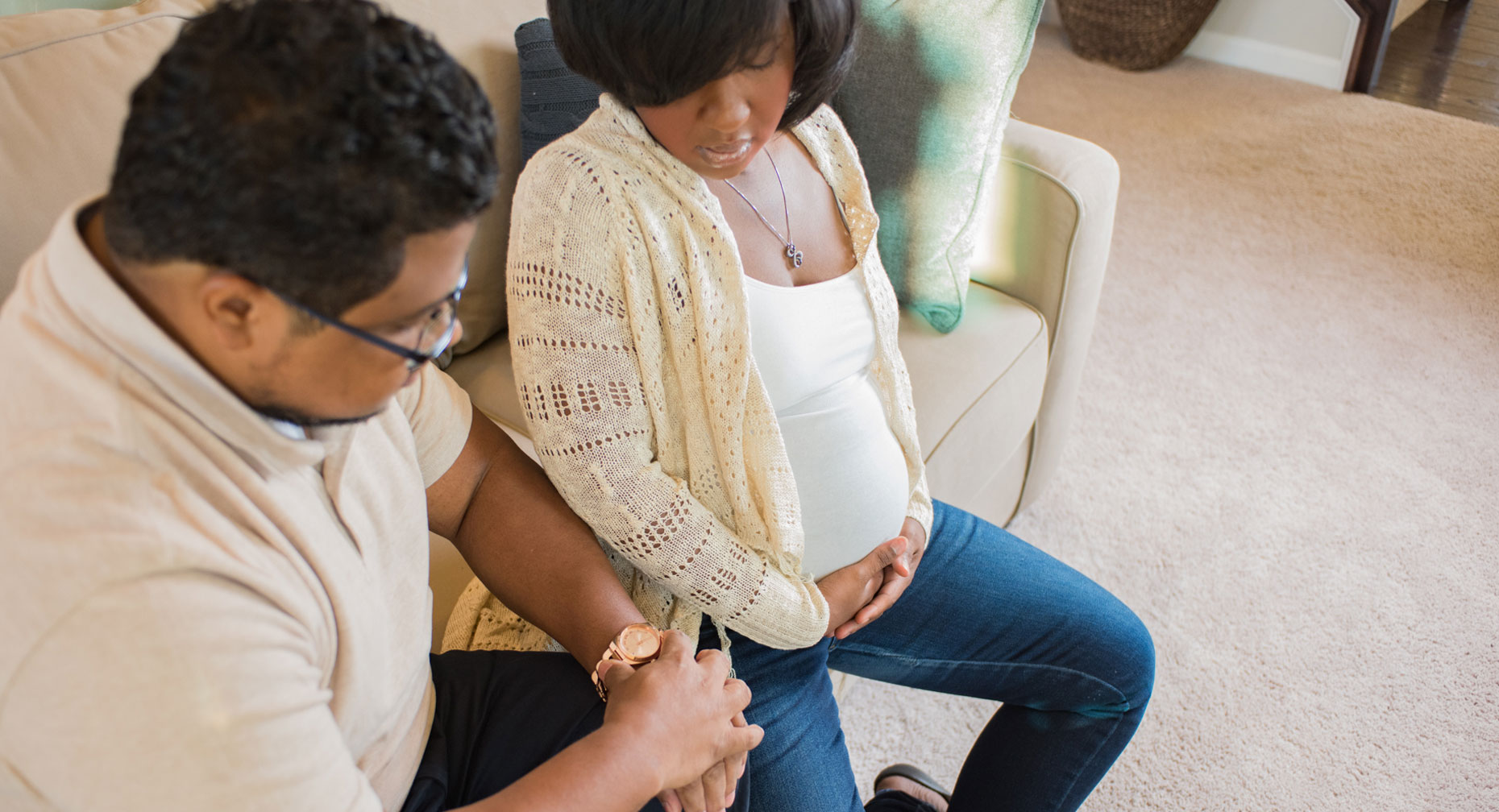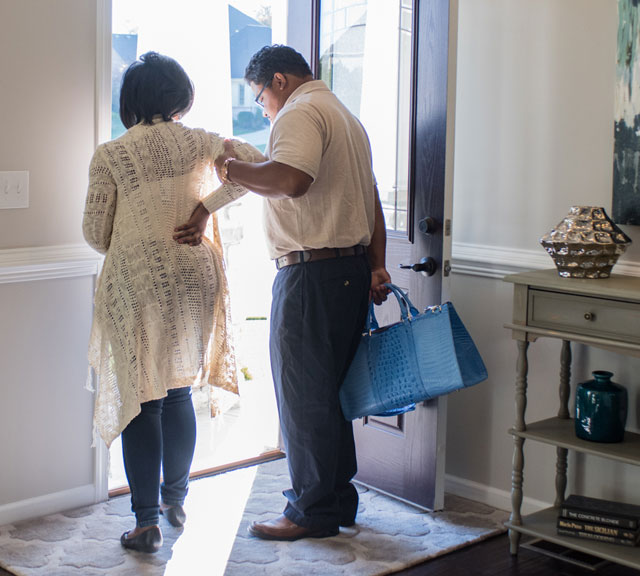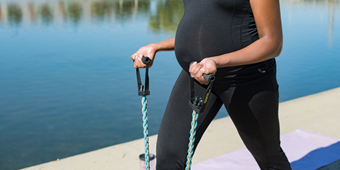Get Ready, Baby. It’s the First Stage of Labor

Answer a few questions and we'll provide you with a list of primary care providers that best fit your needs.
Giving birth is an amazing process that raises all kinds of emotions: excitement, fear, nervousness, joy. Knowing what to expect can help you stay relaxed and focused as you bring your baby into the world.
Although every delivery is unique, there’s a common process women share as they go through labor. Health care providers describe three stages of labor.
The first stage of labor is the longest, typically taking 12 to 19 hours. It has three phases of its own: early labor, active labor and transition phase.
Am I in Labor?
As your due date approaches, you’ll likely be watching closely for signs of labor.
You may feel your baby dropping lower in your pelvis, and some women get a surge of energy to cook, clean or get things ready for the baby’s arrival. These are signs that you’re getting close.
True labor produces signs you don’t want to ignore. If you have any of the following — even if you’re not due for a few weeks — call your doctor to determine if you may be in labor:
- Contractions of your uterus that become stronger and more regular
- Lower back pain and cramping that doesn’t go away
- Gush or slow trickle of amniotic fluid as your “water breaks.” (The technical term is ruptured membranes.)
- Bloody show, a brownish-red mucus discharge that generally blocks your cervix but falls out as your cervix dilates.
Many women, especially first-timers, experience false labor. They have mini contractions called Braxton Hicks contractions that are getting the body ready for the real thing. These are irregular and often stop when you rest or lie down. If you are truly in labor, the contractions won’t stop, and they’ll get harder and faster.
Early Labor
 This early phase can last about eight to 12 hours. You’ll experience contractions that last about 30 to 45 seconds, with five to 30 minutes between them. Contractions help your cervix thin (efface) and dilate (widen) to make it easier for your baby to move through your birth canal (vagina). This phase continues until your cervix is dilated to 3 cm.
This early phase can last about eight to 12 hours. You’ll experience contractions that last about 30 to 45 seconds, with five to 30 minutes between them. Contractions help your cervix thin (efface) and dilate (widen) to make it easier for your baby to move through your birth canal (vagina). This phase continues until your cervix is dilated to 3 cm.
You’ll generally work through early labor at home. Try to relax, take it easy, take a walk or do any mild activity that makes you feel better. Ask your doctor if you can eat and drink something, which may give you energy later in the birthing process.
Time how long your contractions last and the amount of time between them. This will help your doctor or midwife determine when you should go to the hospital.
During this time, your support person can help you by being calm, timing your contractions, and offering you comfort and support.
Active Labor
Based on the timing of your contractions and other signs, your doctor or midwife will tell you to head to the hospital for active labor. This phase typically lasts from three to five hours and continues from the time your cervix is 3 cm until it is dilated to 7 cm.
True labor produces signs you don’t want to ignore.
Your contractions will last about 45 seconds to a minute and allow you only three to five minutes in between.
This is an excellent time to practice your breathing techniques and use relaxation techniques (such as fixating on an object or visualizing a peaceful scene to distract your mind from the pain of the contraction).
Try to switch your positions frequently to get more comfortable. You may even want to walk around or get up to use the bathroom.
Your support person can help you with soothing encouragement, rubbing your lower back or abdomen, helping with breathing techniques, and providing pleasant distractions with conversation or music. It’s important for supporters to be fully focused on mom at this time – and not get offended if they don’t receive a positive response.
Transition Phase
The hardest work occurs in this final phase of the first stage of labor, when your cervix fully dilates to 10 cm. This phase can last from 30 minutes to two hours. Your contractions will be powerful, with little time to rest in between.
You may become hot, cold or sick to your stomach as you work through the contractions.
Your support person can be a great help at this time. Tips to assist you include:
- Offer lots of encouragement and praise
- Avoid small talk
- Help guide your breathing during contractions and encourage you to relax between contractions
- Don’t be concerned if you seem angry, which is a normal part of transition
The big moment is about to arrive in the second stage of labor, which includes delivering your baby.
Answer a few questions and we'll provide you with a list of primary care providers that best fit your needs.
Source: Womenshealth.gov; American Pregnancy Association




